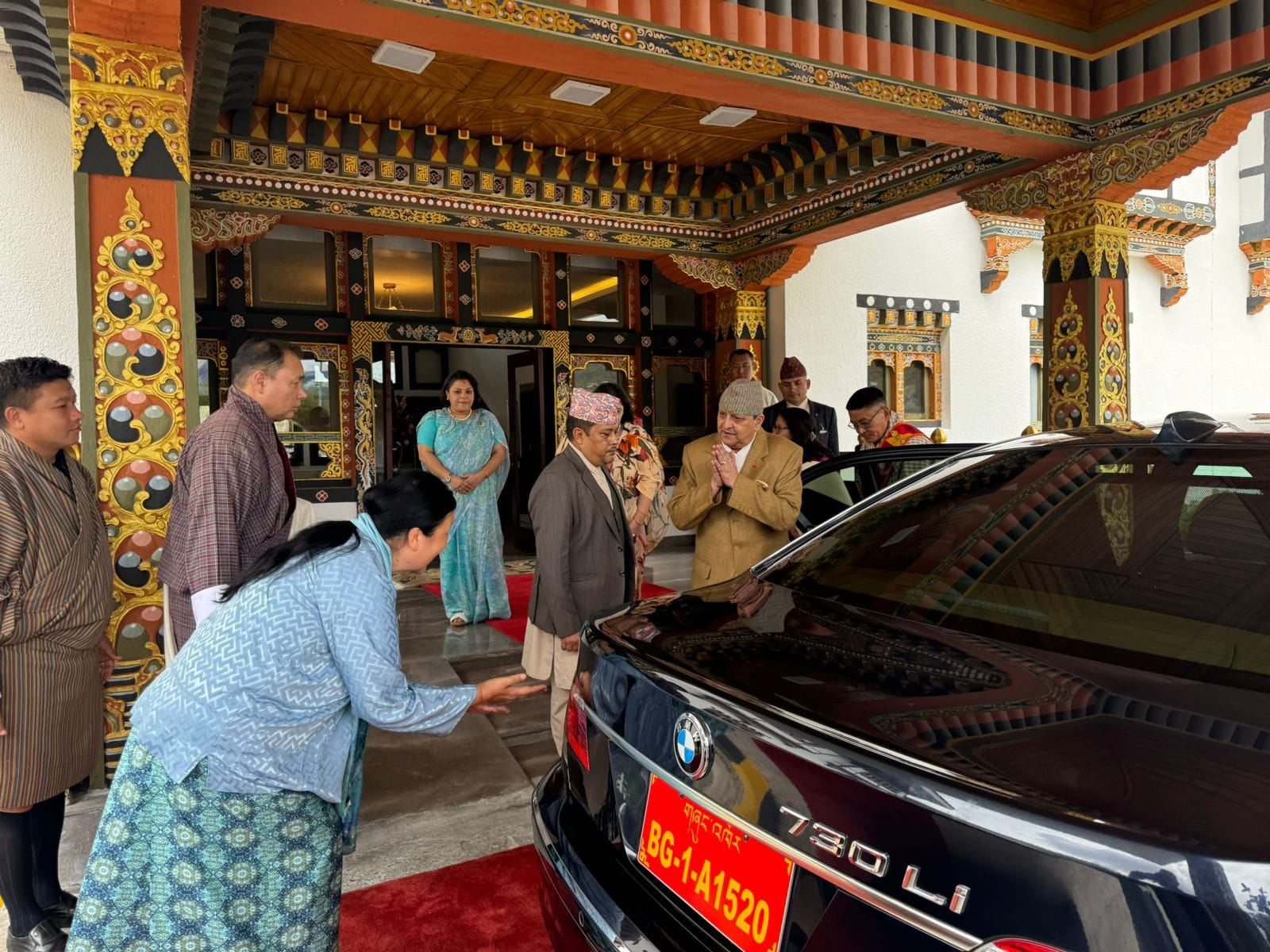Royal Red Carpet in Bhutan: Is Former King Gyanendra's Visit a Strategic Move to Send a Message to India?

Nepal’s former King, Gyanendra Bir Bikram Shah, embarked on a private yet highly significant visit to Bhutan on Thursday, October 3. Accompanied by a five-member delegation, the former monarch was received with high-level respect and grandeur upon his arrival at Paro International Airport. The visit, initially declared as private by Shah's communication team, has sparked speculation about its deeper political undertones.
Royal Reception in Bhutan
A red carpet was rolled out for the former king as he landed in Bhutan, marking the importance of his visit to the neighboring Himalayan kingdom. Shah, traveling aboard a Druk Airlines flight, arrived in Thimphu with his daughter Prerana Shah, niece Sitashma Shah, close relative Rajesh Singh, and his personal secretary, Sagar Timilsina. Upon arrival, he was greeted by none other than a Bhutanese princess, a gesture of the warm diplomatic relations and mutual respect that the two countries have shared over the years.
While the visit is labeled as private, the royal reception extended to King Gyanendra has drawn attention from political circles in Nepal and abroad. The grandeur of his arrival, from the red-carpet treatment at Paro Airport to being welcomed by members of the Bhutanese royal family, has highlighted the significance of his trip, despite being unofficial.
Purpose of the Visit
According to Phaniraj Pathak, Shah’s communications secretary, the trip to Bhutan is primarily personal. During his stay, the former king is expected to visit religious sites and meet several important Bhutanese figures. However, sources suggest that Shah will also meet Bhutan’s King Jigme Khesar Namgyel Wangchuck, sparking rumors about the potential political motives behind the visit.
As the Bhutanese monarch maintains strong relations with India, it is being speculated that this visit might also be seen as a means for the Indian establishment to communicate certain political messages through the Bhutanese King. Gyanendra Shah's close connections to India and his cordial relations with the Bhutanese royal family add more fuel to these claims. Some observers argue that this visit could be part of India’s soft power strategy, using informal channels like former royals to convey messages or gauge the political climate in Nepal and Bhutan.
Political Speculation
This trip is being viewed with interest in diplomatic and political circles, not just in Nepal but also in India and Bhutan. The timing of the visit, just before Nepal’s biggest festival, Dashain, and close to key political events in the region, has led to assumptions that Gyanendra’s presence in Bhutan might have a greater meaning beyond personal or religious reasons.
"It is also said that this visit may be seen as an attempt by the Indian establishment to convey its message through the Bhutanese King," reads one of the speculations circulating in Nepal's political circles. India has historically maintained close ties with Bhutan, and the Bhutanese monarchy has acted as a bridge in maintaining diplomatic harmony between Nepal and India.
Former King Gyanendra is no stranger to regional politics. Although dethroned in 2008 following Nepal’s transition to a republic, he has continued to play a subtle role in Nepal’s political dynamics. His trips to India, participation in religious and cultural events, and occasional public statements have shown his continued influence, even in the background.
Significance of the Visit
Bhutan has a special place in the hearts of the Shahs, as the two royal families share deep-rooted ties. However, the political landscape in South Asia is currently fraught with changes, and any visit of a high-profile former monarch like Gyanendra inevitably attracts attention. Analysts believe that such trips can have hidden diplomatic significance, especially when it involves countries like India and Bhutan, which are closely linked in regional geopolitics.
The visit is expected to last three to four days, with Shah returning to Nepal before Dashain Tika, which falls on October 6. Although there has been no official comment from either the Nepalese or Bhutanese government, the visit continues to generate buzz in both diplomatic and media circles.
Whether this trip will have any lasting impact on Nepal’s political landscape or Nepal-India-Bhutan relations remains to be seen, but for now, it stands as a reminder of the lasting influence and respect accorded to Nepal’s former monarch, both at home and abroad.
Conclusion
Former King Gyanendra’s trip to Bhutan may be labeled as private, but the royal reception, political speculation, and the timing of his visit make it much more than a personal pilgrimage. As political observers watch closely, this trip serves as a potential reminder of how deeply intertwined the region’s royal and political connections are, and how, even in a republic, former monarchs like Gyanendra Shah can still wield significant influence in shaping perceptions and relationships on the global stage.
Gyanendra Bir Bikram Shah
![From Kathmandu to the World: How Excel Students Are Winning Big [Admission Open]](https://nepalaaja.com/img/70194/medium/excel-college-info-eng-nep-2342.jpg)
